Little is known about the amazing creation of the Shell Grotto of Margate, England.
The small English town of Margate sits along the far eastern tip of Kent, across the English Channel from the French Port of Calais. Hidden underground, the magnificent Shell Grotto of Margate held its secrets of the past, until it was discovered in 1835. Approximately 4.6 million shells line the walls, ceilings, an altar, and a dome that opens to the sky. The entire grotto is covered in symmetrically-balanced and geometric shell work. However, nobody knows why or when this grand work of art was built, or by whom.
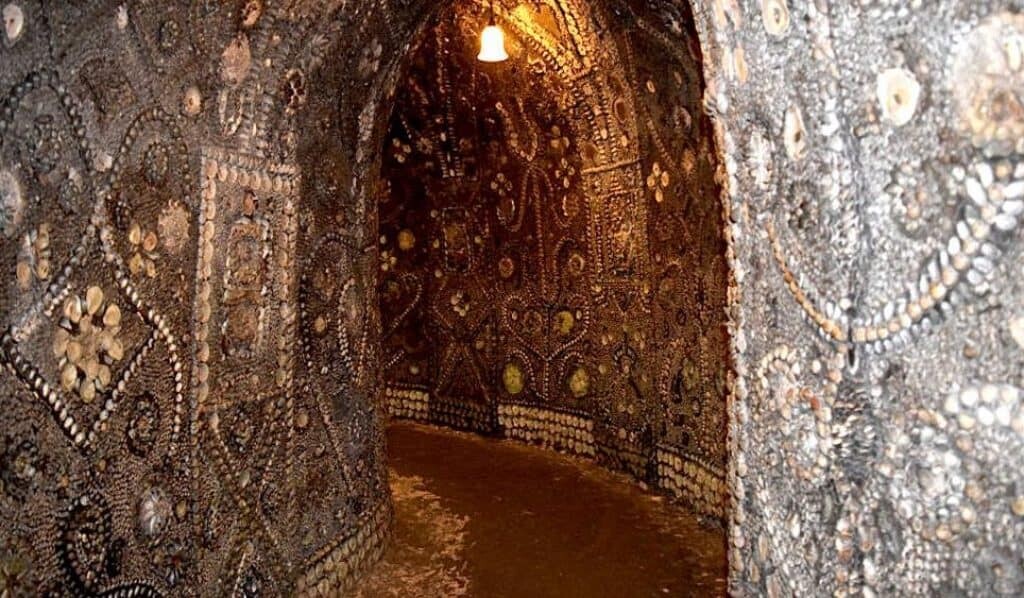
Description Beyond Words
The shells of many types and sizes form an elaborate mosaic in intricate decorative patterns and geometric shapes. There are many symbols throughout the grotto that are of a pagan nature: symbols of life, death, fertility, femininity, and love. Winding passages with arched ceilings and small rooms eventually lead to the altar chamber, which measures approximately 5 x 6 meters. Arching entrances mark passages into chambers hollowed into the earth.
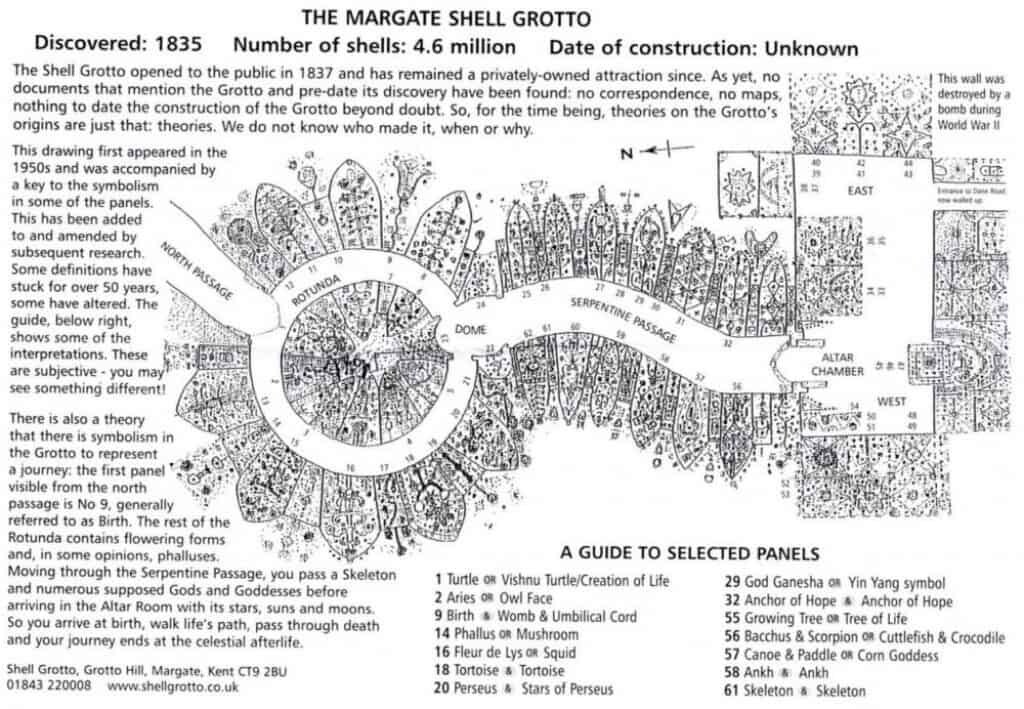
A horizon line runs through the grotto. Historians believe the area below the line represents earth, and above the line is heaven. The panel called “The Womb,” does not have a horizon line, and some believe the womb-shaped mosaic represents the merging of heaven and earth. The anatomical imagery also symbolizes the power of the female, which appears to be one major theme of the grotto. Some even theorize that women designed and built it.
Related: History of the Amber Room and its Mysterious Disappearance
The main room at the end of the winding passage contains an altar, also covered with shells. This is the Altar Chamber. A half-moon niche forms the altar itself. At the back of the niche, there is a shell mosaic of the sun. Below the altar is the moon. Formerly, the only access to the world above consisted of a circular hole roughly two feet in diameter opening to the surface. For many years, this entrance remained concealed.
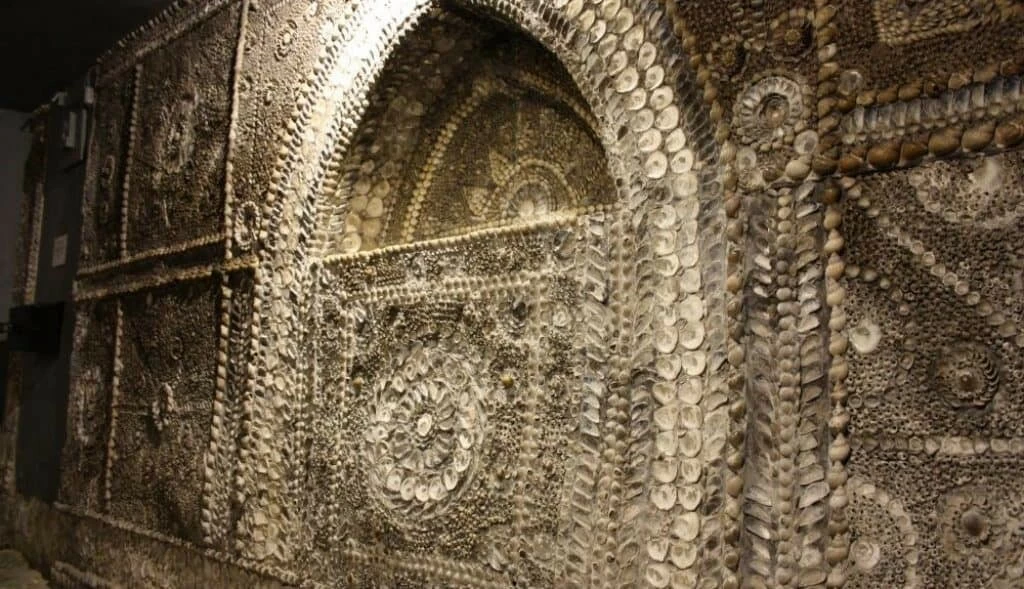
Some historians believe the grotto as a whole symbolizes the journey from birth to death and on to the afterlife. As you walk the halls, you are walking that journey through the associated shell mosaic symbols, and end up in the altar chamber of heaven.
Summer Solstice of the Dome
Some people suspected the dome may open up to some major celestial event, so they conducted some research. Sure enough, on the Summer Solstice, the sun shone directly down into the dome. When they used reflectors to aim the light down the passageway, the altar lit up.
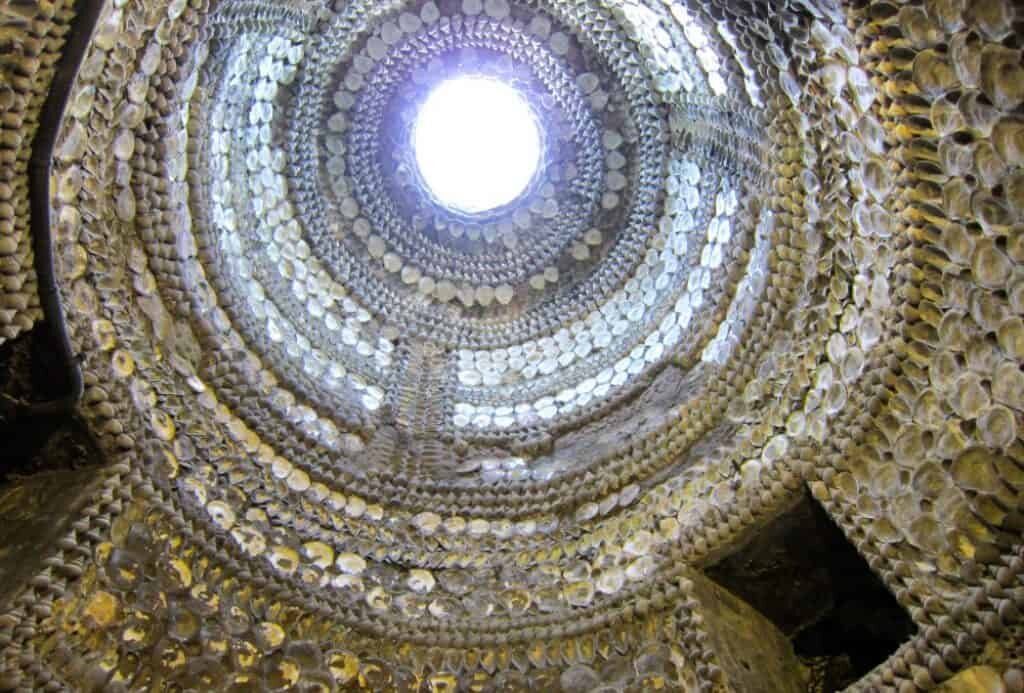
History of the Grotto
The Shell Grotto of Margate sparks controversy today. Who built the underground passages, and why? When did construction occur? Could the Grotto have served over the centuries as a secret meeting place or contraband storehouse for pirates? Did it represent the work of an 18th century eccentric? Or did ancient artisans from Roman or pre-Roman eras decorate the walls?
The history of the site has been well-known since 1835. A farmer named James Newlove and his son Joshua worked to clear pastureland above the Shell Grotto in order to create a new duck pond. They discovered a mysterious hole in the ground. James lowered Joshua into the crevice and the youngster became the first person to report about the Shell Grotto of Margate.¹
From 1837 onwards, the site became a popular tourist attraction. Victorians toured the winding passages using lamps. Consequently, the chemical residues these visitors left behind frustrated modern efforts to carbon-date the site effectively.² The soot also caused the shells to fade, and once the walls and ceilings were cleaned, the shells, which had once been colorful, were white.
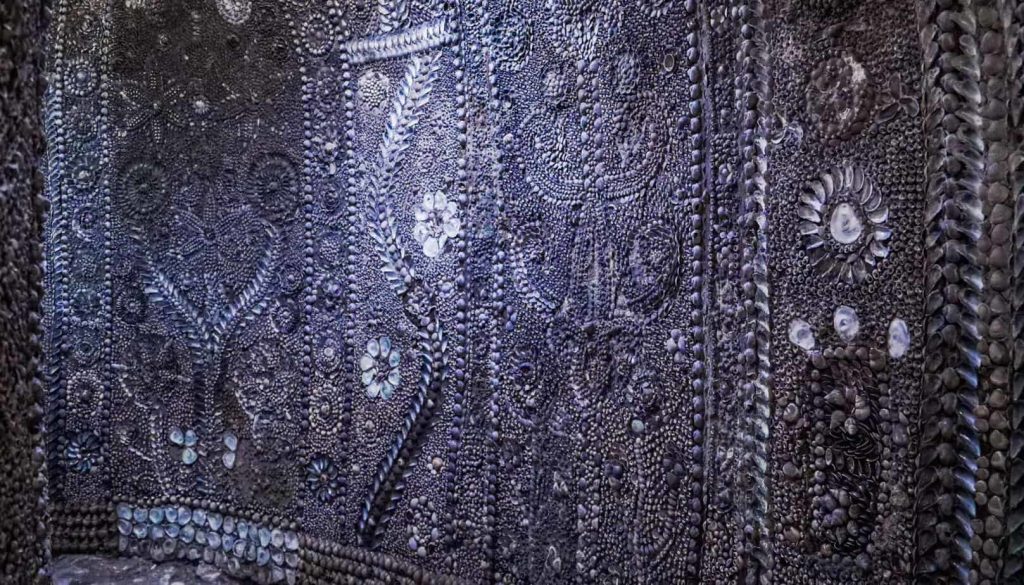
Theories About the Construction
Since its discovery, the Shell Grotto of Margate has continued to mystify local residents. Many theories exist concerning its origins. During the late 1700s, the construction of shell-lined grottos became a popular hobby among some members of the British nobility. For example, a short distance away in Hertfordshire, the poet John Scott commissioned the construction of a similar grotto at Amwell House during the 1770s.³ One plausible theory for the existence of the Shell Grotto of Margate relates to the grotto-building fad in England during the reign of King George III.
On the other hand, critics point out that the land around the Shell Grotto of Margate did not form part of a large estate.4 Massive quantities of shells line the walls, including cockle, oyster, mussel, whelk¹, and conch 4, most local in origin but some drawn from as far away as the Caribbean. The variety of shells suggests a large-scale construction effort. It seems odd no one in the area would remember the project, and no stories have been passed down throughout the generations as once was common.
Others theorize that the shell grotto is a hoax and was built by someone in the early 19th century.
Older Origins
Some people argue that the grotto might represent an ancient religious site from the Roman or pre-Roman era.4 They estimate the grotto to be around 2000 years old. Those who believe the grotto may be very old suspect that it was probably used as a place of ritual worship or a temple. The altar with celestial bodies surrounding it suggests the significance of earth, nature, sky, seasons, and the elements. If it is indeed a temple, historians say it would most definitely have been of a Pagan nature, perhaps pre-Christianity.
Many coastal sites in Kent served as contraband warehouses during the 1600s and 1700s. Yet the grotto lies inland. It does not contain tunnels leading to the coast.
Whether it originates from the 19th century or the first century, what is indisputable is the sheer beauty of the Shell Grotto of Margate. Experts believe that it probably took multiple generations to create. It would have been a huge undertaking with the shipment of the shells to the area, excavation of the passageways and rooms, pattern design, and the construction of the mosaics. The unknown origins of Margate’s shell grotto will likely fascinate people for years to come.